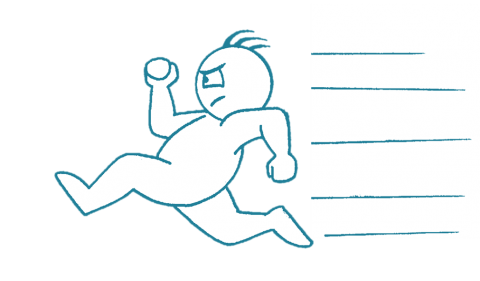Do It Right The Fast Time!

Two steps may be required to adequately clean and disinfect surfaces. Are you sure your staff is complying with disinfectant label instructions and your internal policies? It may be worth checking out!
Many cleaners don’t disinfect. Many disinfectants do not clean. Cleaning removes dirt and soil, and it can also remove pathogens from surfaces. Disinfection not only removes pathogens, it kills them – which is what is needed to achieve the desired level of safety in the environment of patient care.
Are you doing the two-step?
Soil, hard water and fragrances can inhibit the effectiveness of disinfectants. It is important to check your disinfectant label and supporting documentation to determine if the efficacy testing was done in the presence of soil (blood serum) and hard water. If so, your product is capable of cleaning and disinfecting in one step. If not, it may require two steps to complete the job. First cleaning, and then disinfecting. This additional step can add significant time to the patient area cleaning process.
Is your surface staying wet long enough?
Disinfectants don’t work immediately upon contact with surfaces. Label instructions on disinfectants clearly communicate the amount of time that the disinfectant must remain wet and in contact with surfaces to achieve the desired level of pathogen kill. Some disinfectants take up to ten minutes to kill common pathogens. During this time, surfaces must remain wet. Clearly, keeping a surface wet for 10 minutes can create some challenges for the cleaner. To keep the surface wet, the disinfectant would need to be reapplied to the surface multiple times, which may not be realistic.
Shortening the dwell time may mean that surfaces are not being properly disinfected, and may mean that some pathogens survive after application. Accrediting bodies, such as The Joint Commission, monitor compliance with disinfectant label contact times, and may cite facilities for non-compliance. Speed of kill becomes a key factor in compliance. Assurances of speed and efficacy are key and critical in this process. Making sure that the job is done right is paramount.
With both cleaning and disinfection, make sure you target solutions which will give you the efficacy and efficiency desired. There are now many one-step disinfectant cleaner technologies on the market with shorter contact times that should be considered to improve the efficiency and effectiveness of your disinfection processes.
Diversey can help you Do It Right, The Fast Time with products that both clean and disinfect, with required contact times as short as One Minute!
Where is the Culprit?
How do you know what surfaces are contaminated?
There is strong scientific evidence that shows that daily cleaning and disinfection of high touch surfaces can reduce the pathogen load on surfaces and help reduce the risk of infection transmission.
High touch surfaces are areas that are frequently touched or near patients. These surfaces can often become contaminated by the patient’s or resident’s own flora, or by the hands of healthcare workers or visitors. If it is probable that these surfaces could carry concentrations of pathogens that could be picked up by the hands of a healthcare worker or spread to others, it is important that these surfaces are disinfected daily. When selecting a disinfectant for cleaning these surfaces, you should ensure that it is effective against pathogens of concern, and that the dwell time required to kill these pathogens is realistic in the environment of care.
Unfortunately, you cannot always tell where pathogens are hiding by visual indicators alone. A surface or medical device can look clean, and be heavily contaminated with pathogens. When these contaminated surfaces or devices are touched, they can spread pathogens to the patient or someone’s hands, and these pathogens can be unknowingly spread through the facility or to another patient. Surfaces such as bed rails, light switches, door handles, faucet handles and blood pressure cuffs can be the culprits.
Routine cleaning and disinfecting may help prevent the spread of pathogens. The Centers for Disease Control and Prevention (CDC) Guidelines recommend environmental hygiene and hand washing as two of the most important environmental controls to reduce HAIs.

